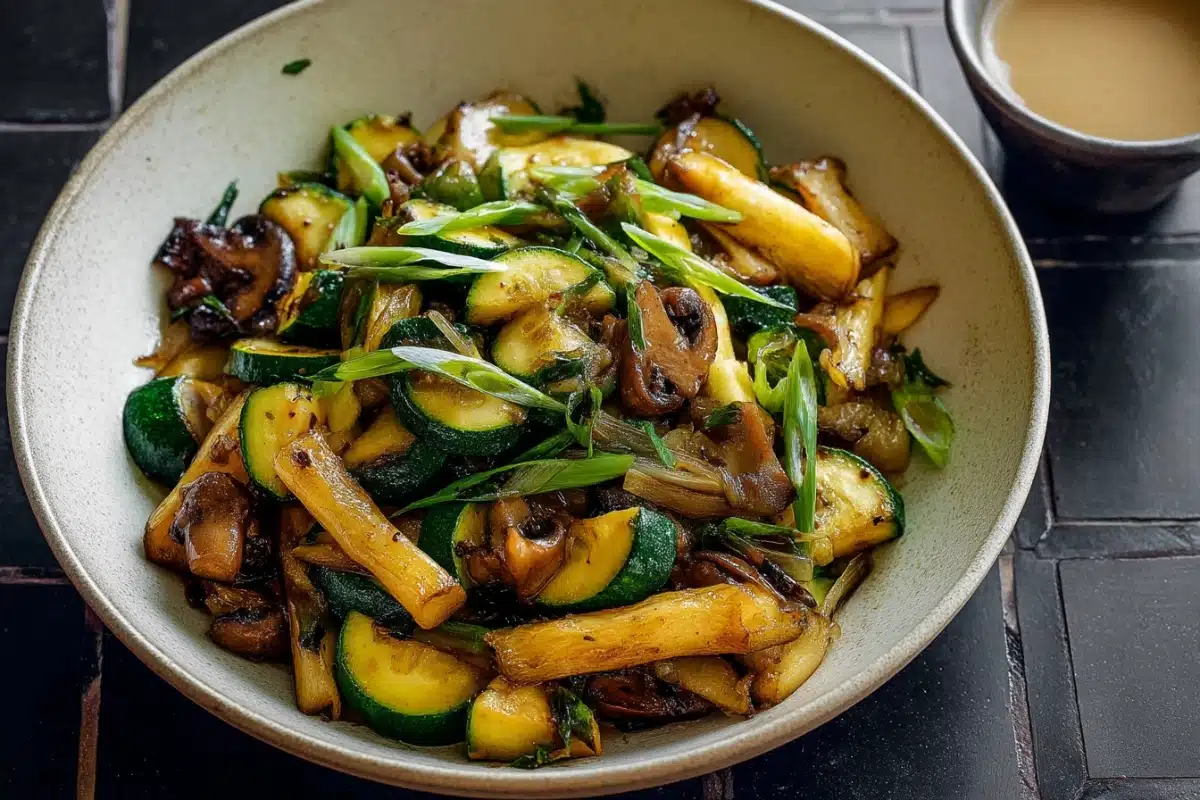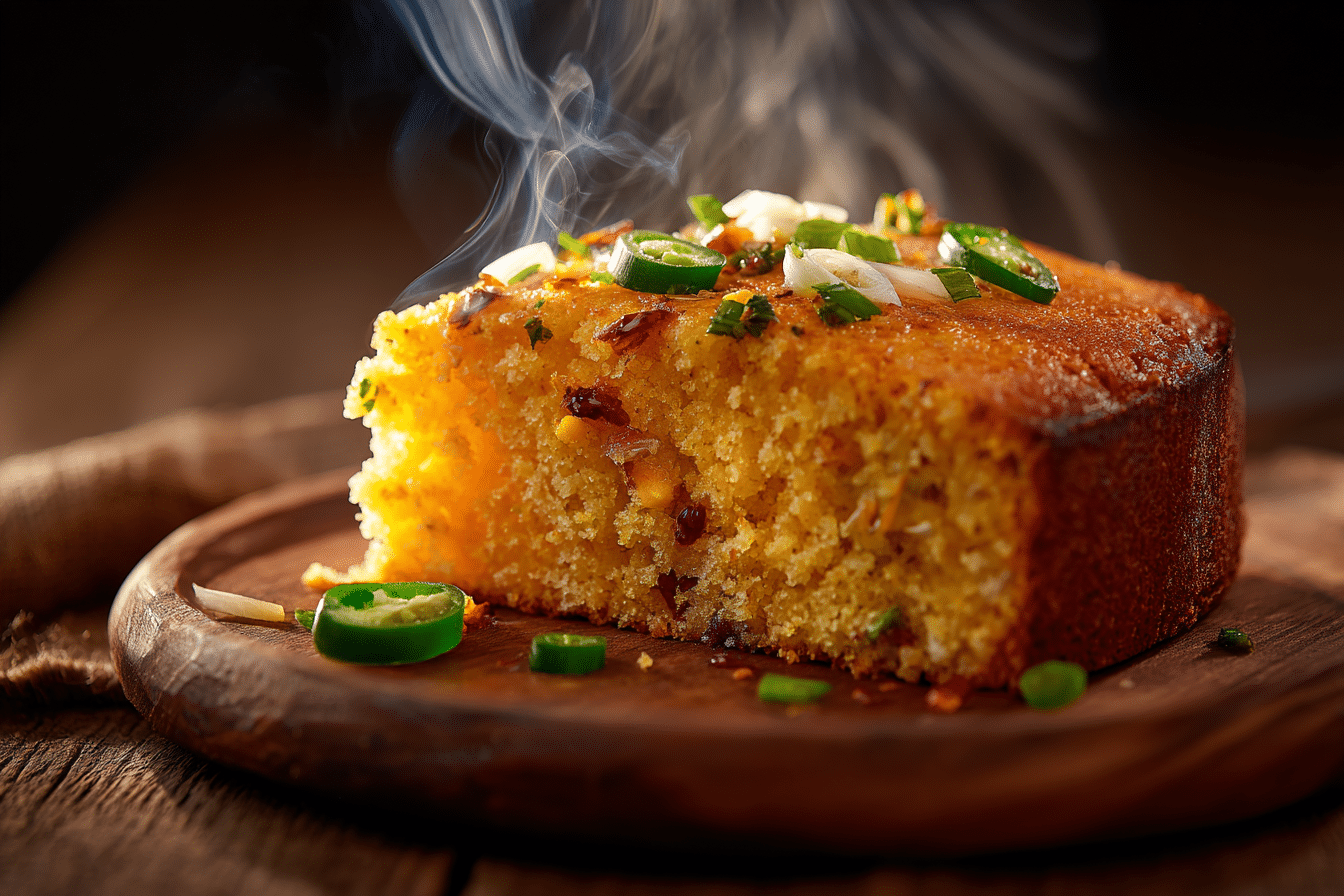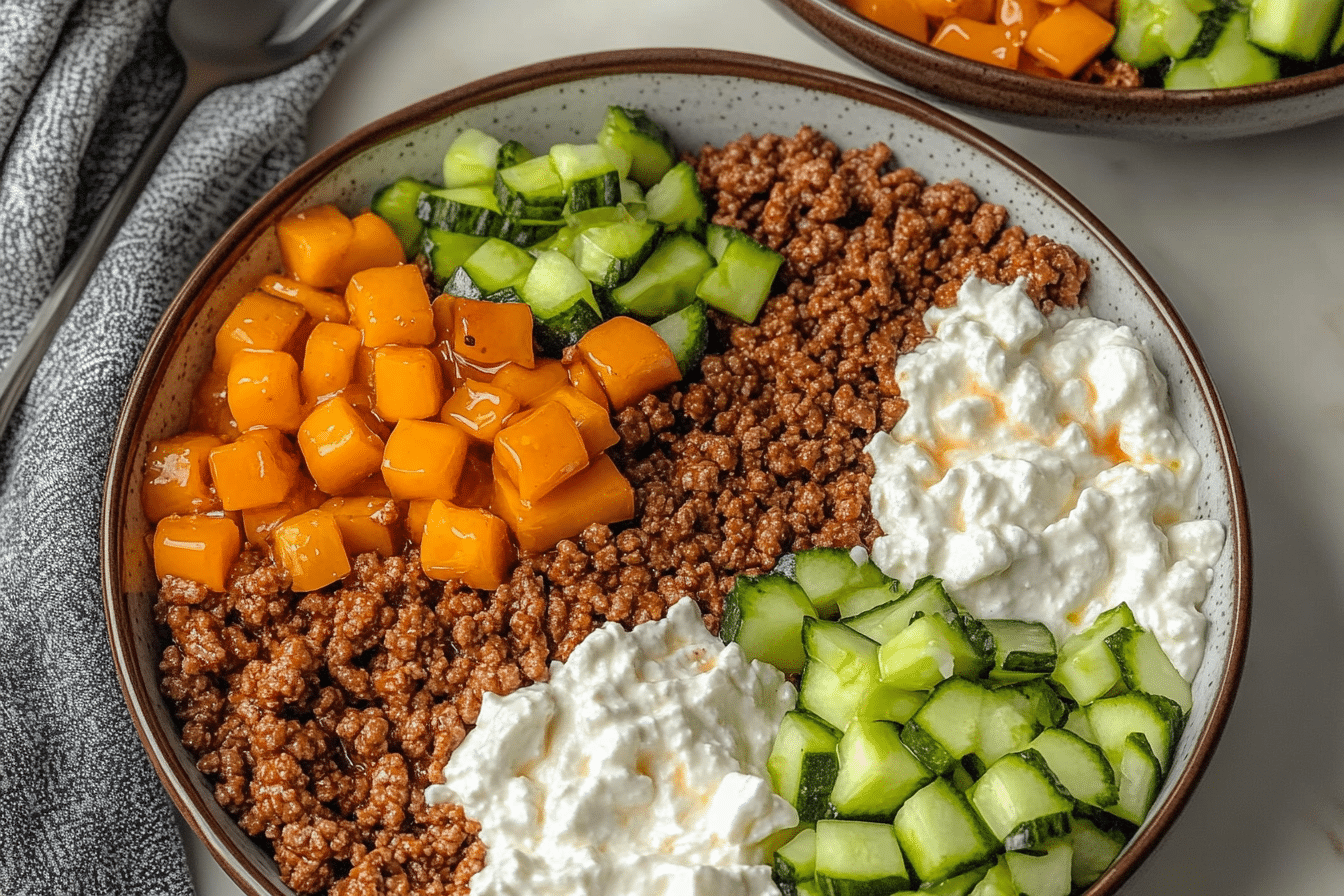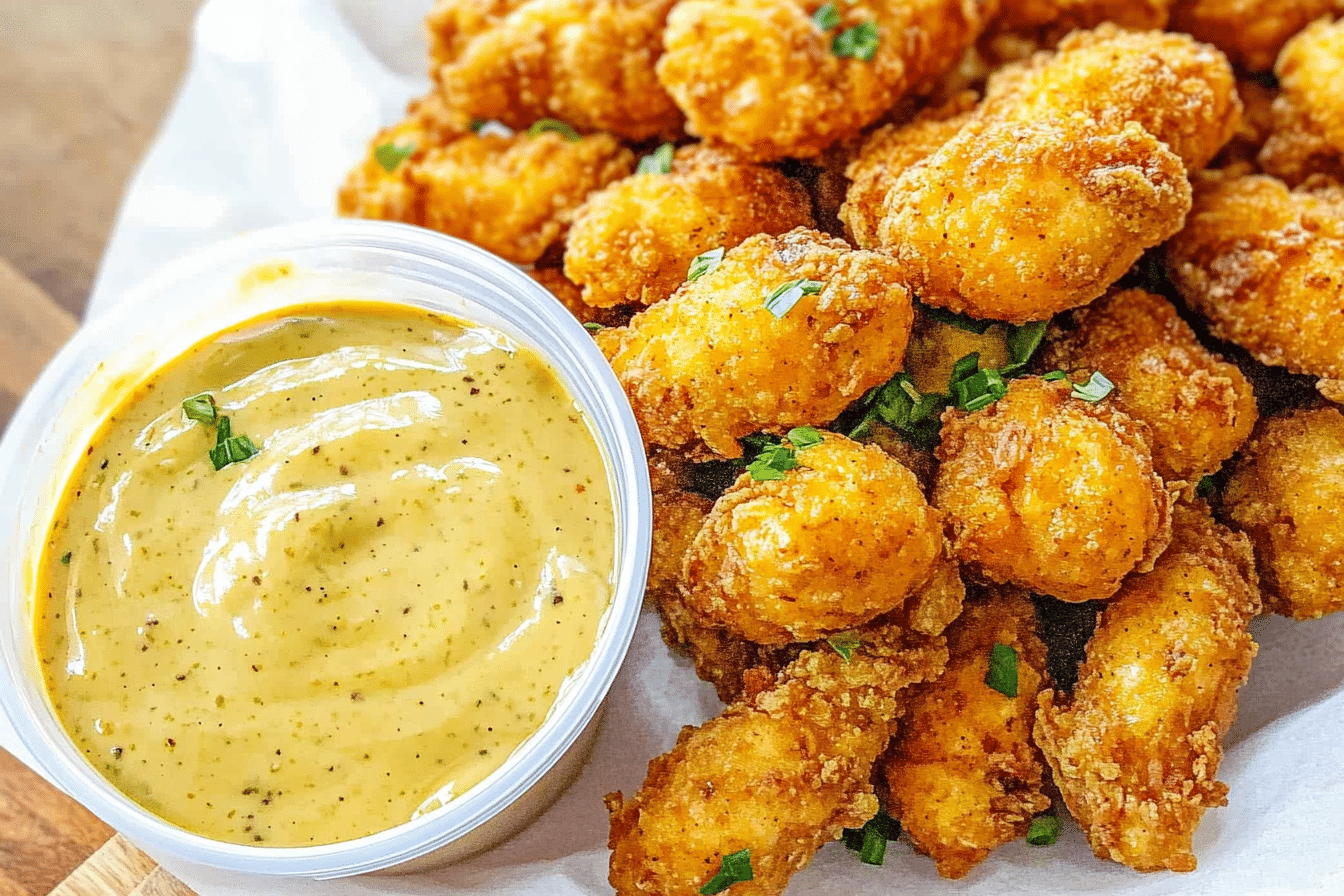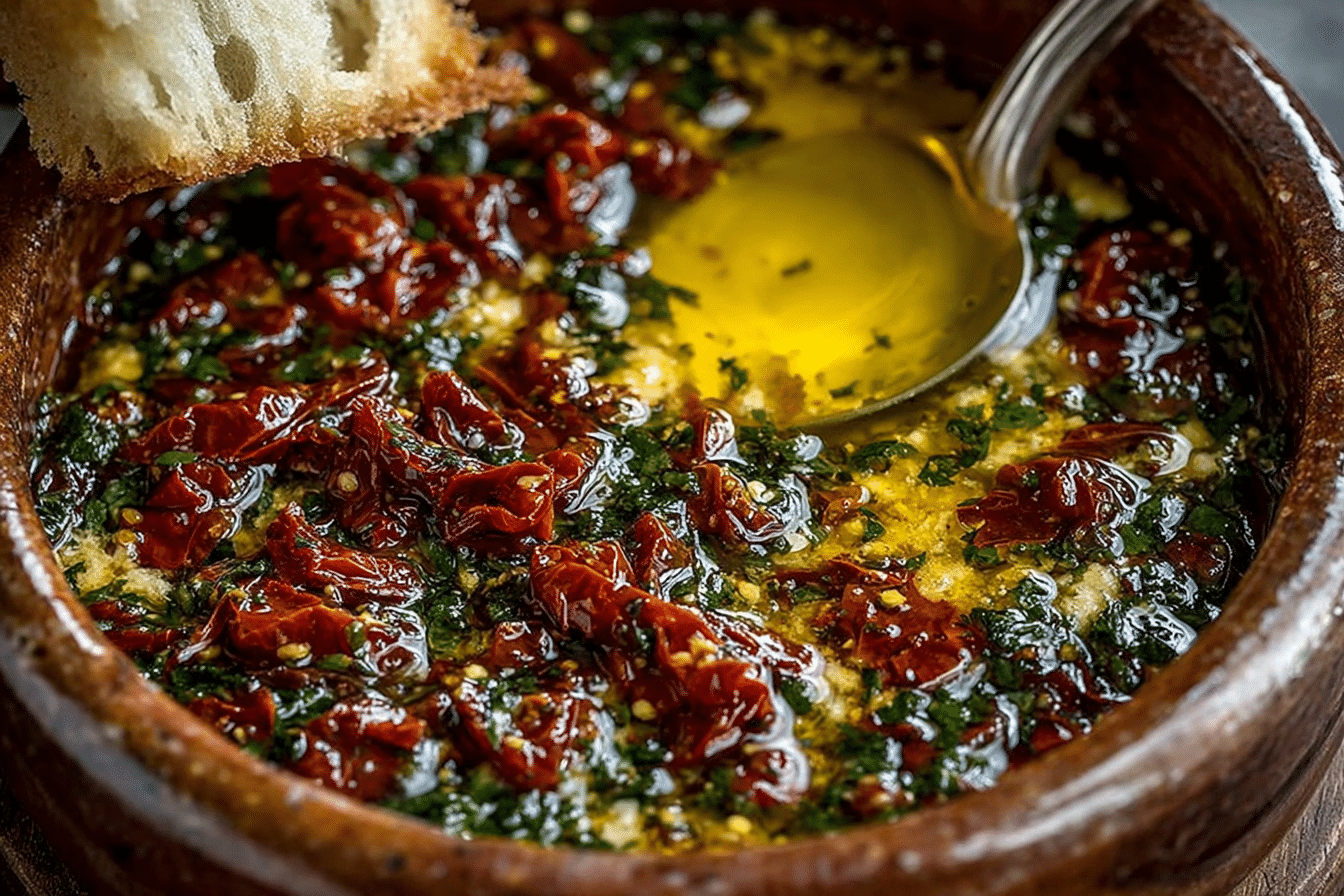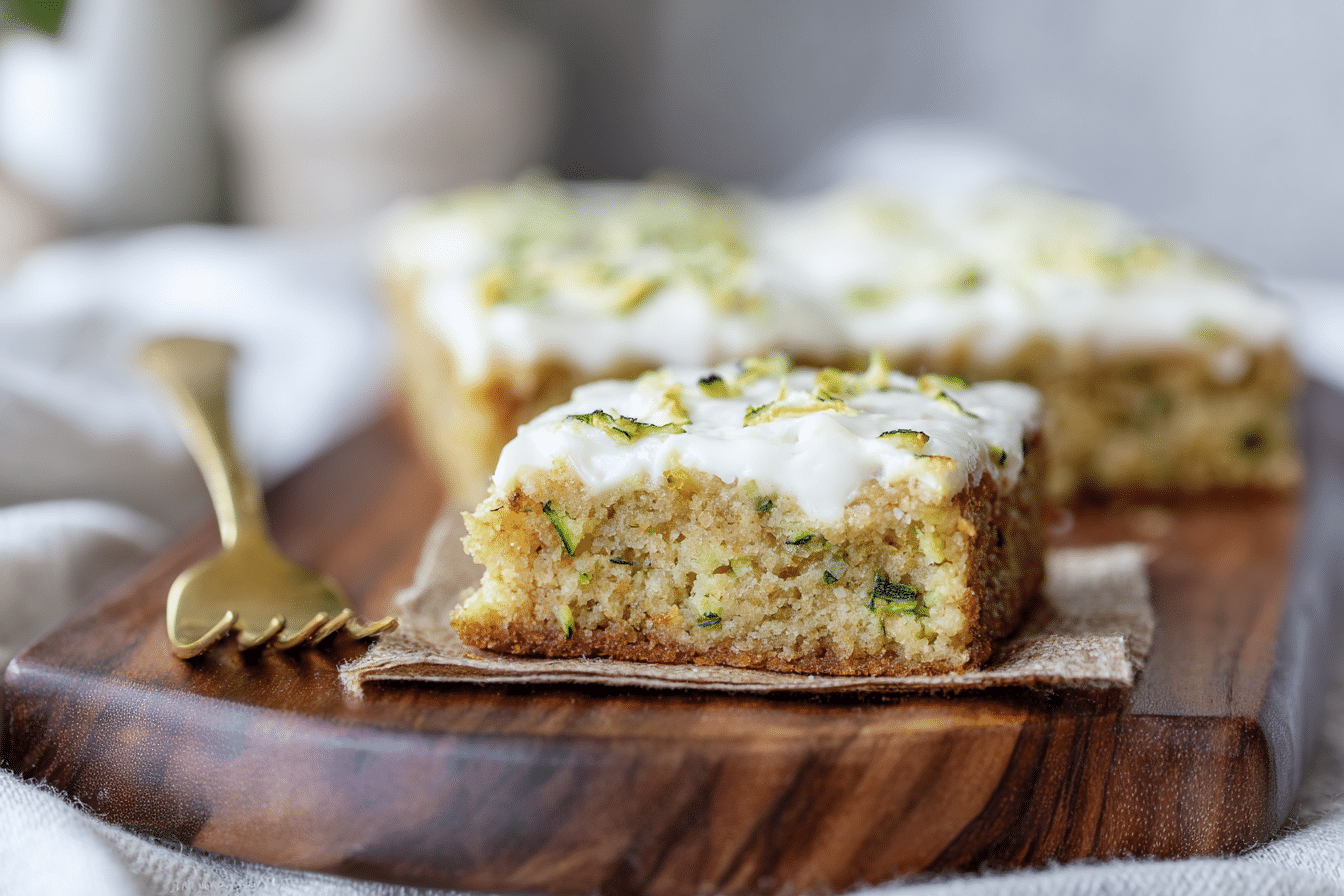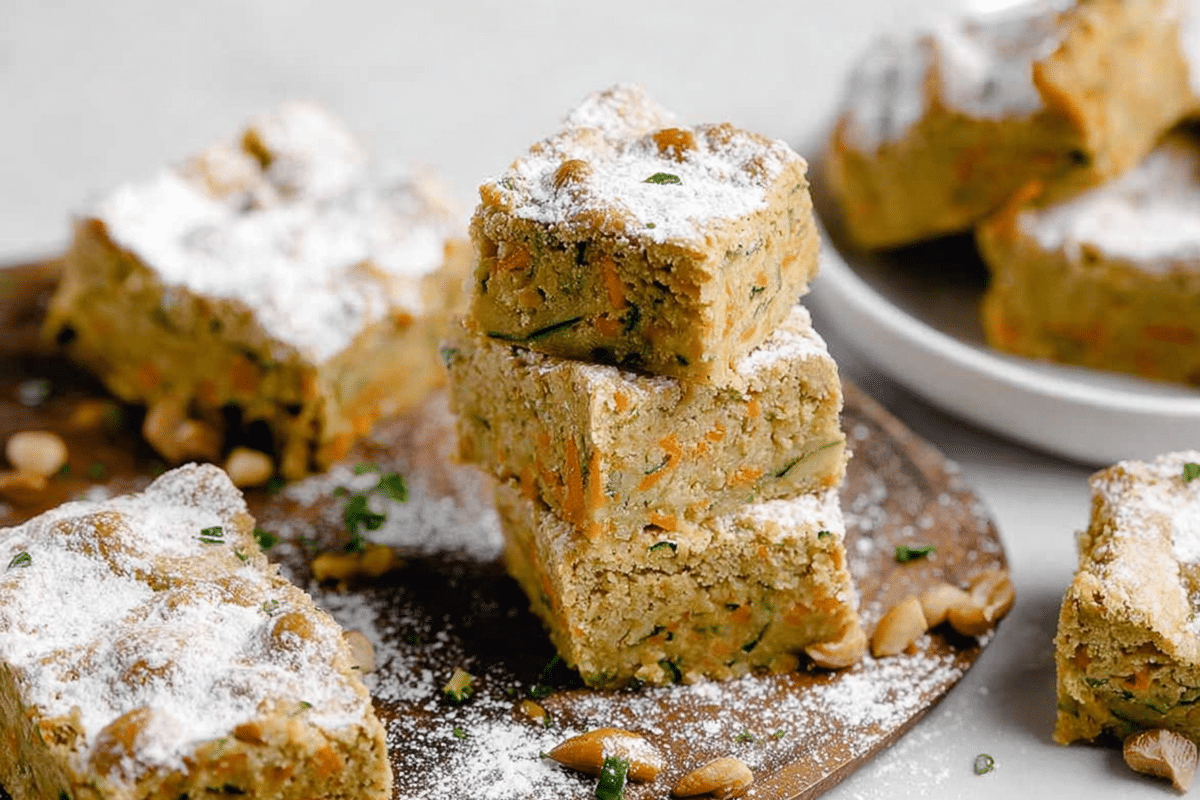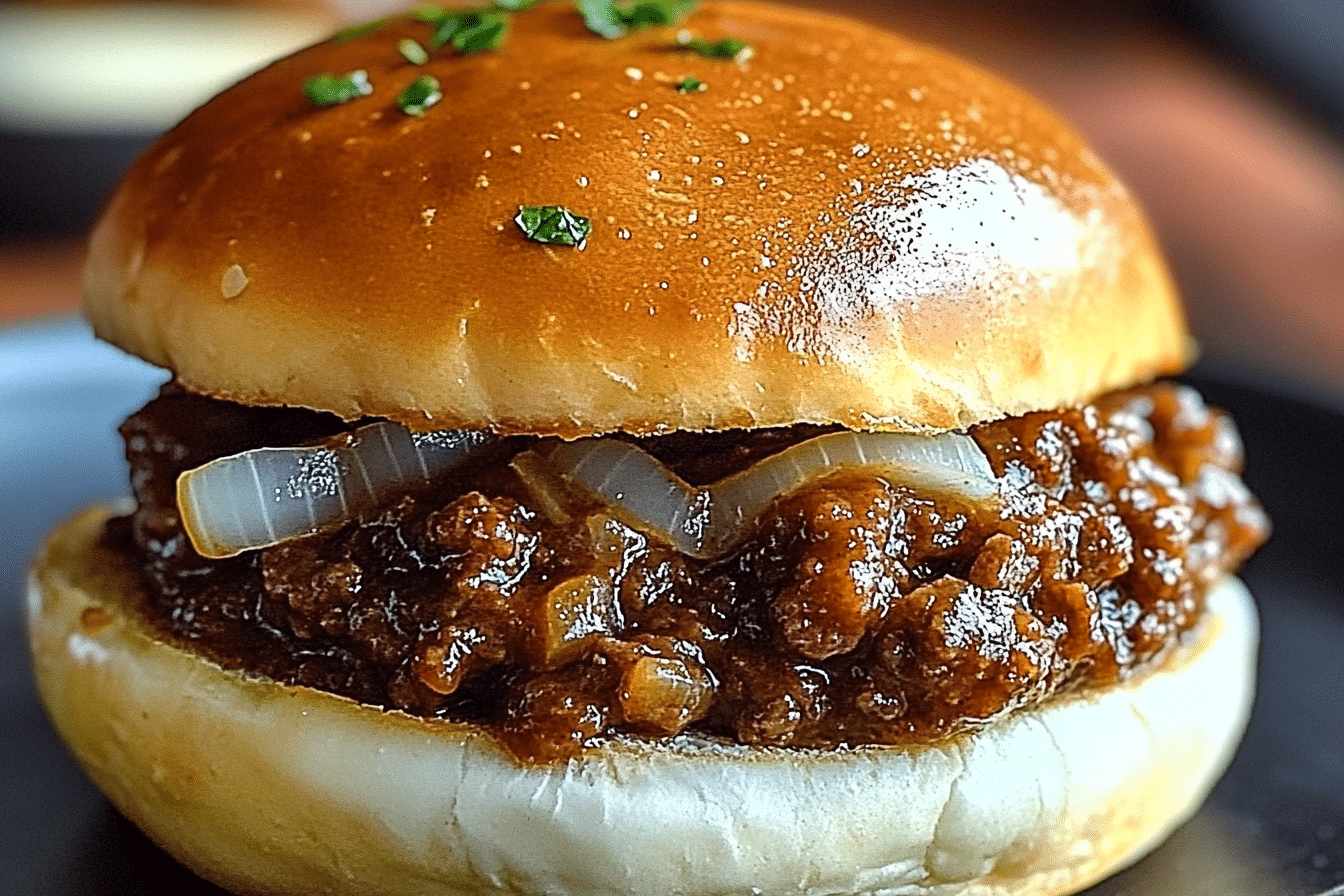Hibachi veggies were the first dish I ever tried at a Japanese steakhouse, and they instantly stole the show. The sizzling sound, the mouthwatering aroma, and that perfect blend of tender zucchini, mushrooms, onions, and squash hooked me for life. Hibachi veggies bring comfort food vibes without the guilt, and best of all, they’re ridiculously easy to make at home. Packed with antioxidants, fiber, and bold flavors, these recipe are a winning side for nearly any meal. Skip the takeout — you’ll be surprised how much better your homemade version can taste.

Table of Contents
Why You’ll Love These Hibachi Veggies
Hibachi veggies check all the right boxes. They’re one of those quick meals that come together in under 20 minutes, making them perfect for weeknight dinners. The combination of fresh vegetables with umami-rich soy sauce and buttery goodness makes every bite irresistible. These recipe are a go-to for healthy recipes and crowd-pleasing comfort food. Even picky eaters come back for seconds, and they’re naturally vegetarian, with simple tweaks for vegan and gluten-free diets. Trust me, this one’s staying in your rotation.
Ingredients With Quantity
Hibachi veggies are all about freshness and balance. Here’s what you’ll need to get started:
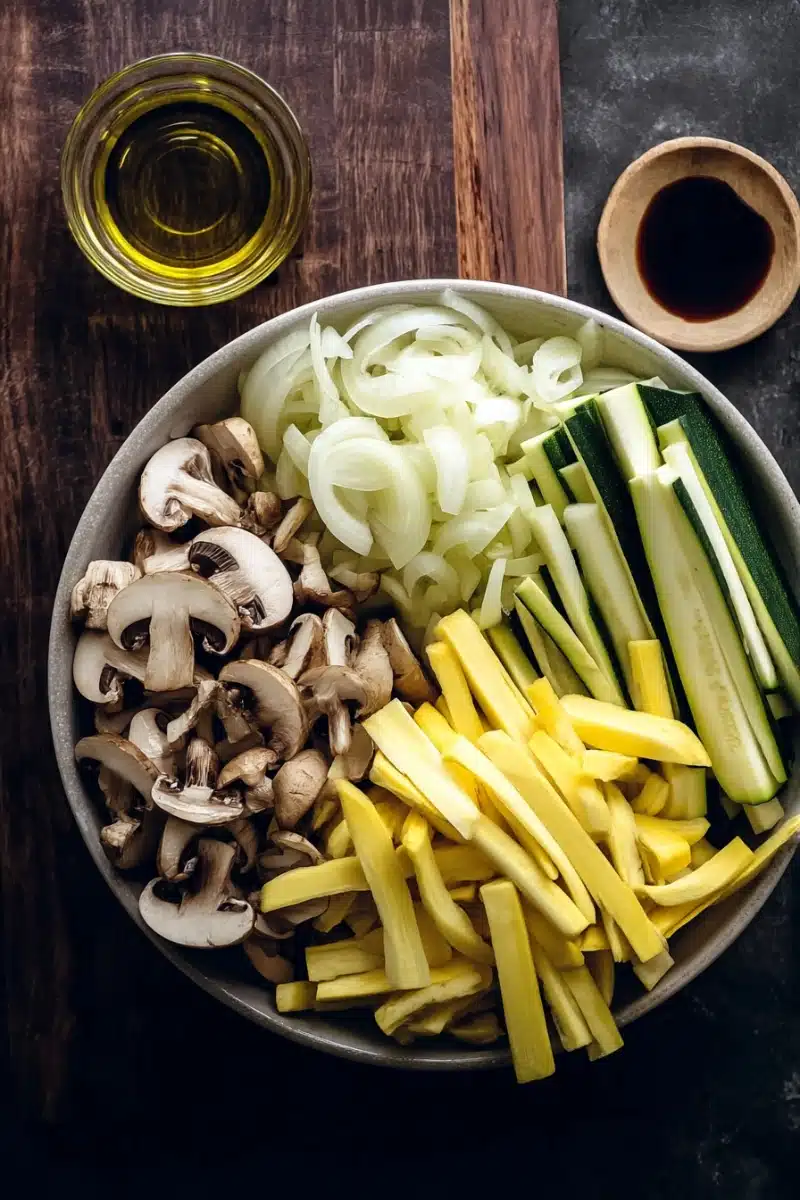
- 2 tablespoons vegetable or olive oil
- 1 tablespoon unsalted butter
- 1 cup yellow onion, thinly sliced
- 2 cups zucchini, cut into strips
- 2 cups yellow squash, cut into strips
- 1 cup mushrooms (white, baby bella, or cremini), sliced
- 2 teaspoons soy sauce (or coconut aminos)
- 1/4 teaspoon sea salt
- 1/4 teaspoon ground black pepper
These ingredients make hibachi veggies vibrant, savory, and satisfying. Each component brings nutritional benefits — zucchini and squash are rich in vitamin C, mushrooms add immune-supporting selenium, and onions offer prebiotics for gut health. Pair this with our Smoked Hot Dog Burnt Ends for a protein-packed plate.

Hibachi Veggies
- Prep Time: 10 minutes
- Cook Time: 10 minutes
- Total Time: 20 minutes
- Yield: 4 servings 1x
- Category: Dinner
- Method: Stir-Fry
- Cuisine: Japanese
- Diet: Vegetarian
Description
Hibachi veggies bring comfort food vibes without the guilt — sizzling zucchini, mushrooms, onions, and squash stir-fried to perfection with bold flavor and buttery soy sauce goodness.
Ingredients
- 2 tablespoons vegetable or olive oil
- 1 tablespoon unsalted butter
- 1 cup yellow onion, thinly sliced
- 2 cups zucchini, cut into strips
- 2 cups yellow squash, cut into strips
- 1 cup mushrooms (white, baby bella, or cremini), sliced
- 2 teaspoons soy sauce (or coconut aminos)
- 1/4 teaspoon sea salt
- 1/4 teaspoon ground black pepper
Instructions
- Heat a skillet over medium-high heat.
- Add butter and let it melt, then add oil.
- Sauté sliced onions for 2 minutes.
- Add zucchini, squash, and mushrooms, stirring frequently.
- After a few minutes, pour in soy sauce and season with salt and pepper.
- Cook until veggies are tender with a slight crunch, about 8–10 minutes.
- Serve hot with hibachi noodles or your favorite protein.
Notes
Use a cast iron skillet or wok for best results. Avoid overcrowding the pan, and cut all vegetables to uniform size for even cooking.
Nutrition
- Serving Size: 1 serving
- Calories: 120
- Sugar: 5g
- Sodium: 370mg
- Fat: 8g
- Saturated Fat: 2g
- Unsaturated Fat: 6g
- Trans Fat: 0g
- Carbohydrates: 10g
- Fiber: 3g
- Protein: 3g
- Cholesterol: 5mg
Essential Hibachi Veggies Tools for Cooking
Hibachi veggies come out best when cooked quickly at high heat, which is why your tools matter. A 12-inch cast iron skillet or a wok is perfect for that authentic sear. These tools retain heat evenly and mimic the flattop grill used in Japanese steakhouses. For prep, grab a sharp chef’s knife, a wide spatula for tossing, and a sturdy cutting board to handle all your veggies. Trust these basics to get the job done right — and if you’re making our hibachi chicken recipe too, you’ll want to keep everything hot and handy.
How to Make the Hibachi Veggies
Hibachi veggies come together quickly, so have everything prepped before you begin. Start by heating your skillet over medium-high. Add the butter first, then the oil once it melts. Toss in sliced onions and sauté for 2 minutes. Add in zucchini, squash, and mushrooms next, stirring frequently. After a few minutes, pour in soy sauce, season with salt and pepper, and cook until the veggies are tender but still have a slight crunch—about 8 to 10 minutes. Serve them hot with Easy Chicken Nuggets with Smoky BBQ Sauce or your favorite protein for a satisfying Japanese-style meal at home.

Swaps and Substitutions for Hibachi Veggies
Hibachi veggies are super flexible, so feel free to get creative. Don’t like mushrooms? Swap them out for sliced bell peppers, snow peas, or even broccoli florets for more crunch. If you’re avoiding soy, coconut aminos work great as a substitute. Going dairy-free? Use a plant-based butter alternative. You can also add a dash of garlic powder or red chili flakes for extra flavor. These tweaks let you adjust veggies hibachi to suit any diet or flavor preference. Pair your new veggie combo with our hibachi steak marinade to create a totally custom hibachi experience.
What to Serve With the Hibachi Veggies
Hibachi veggies are the ultimate side dish for a homemade Japanese dinner. Serve them alongside juicy meats like our hibachi steak or hibachi chicken. You can also go full surf and turf with our hibachi shrimp or try a sizzling combo like hibachi steak and shrimp. Don’t forget to add fluffy steamed rice or hibachi noodles for a complete meal. These veggies even work well over salad greens or grain bowls for a healthy lunchbox idea. The combinations are endless—and always tasty.
Storing and Reheating Tips
Hibachi veggies keep well, making them perfect for meal prep ideas. Store cooled leftovers in an airtight container and refrigerate for up to 3 days. To reheat, use a skillet over medium heat to keep that stir-fried texture intact. You can also microwave them, but do it in short bursts to avoid sogginess. For a crispier edge, pop them in an air fryer for 2–3 minutes. These reheating tricks will help your veggies hibachi taste fresh every time—even as leftovers.
Common Cooking Mistakes to Avoid
Hibachi veggies only need a few minutes to cook, but there are some easy mistakes to watch out for. Don’t overcrowd the pan—doing so will steam your vegetables instead of giving them that classic sear. Cut all veggies to a uniform size so they cook evenly. Also, avoid overcooking; you want your hibachi tender with a slight bite, not mushy. Finally, season with soy sauce near the end to keep it from burning. Want more stir-fry style options? Check out our Asian recipes that work perfectly with these techniques.
Homemade Sauces to Serve With Hibachi Veggies
Hibachi veggies get even better when dipped or drizzled in homemade sauces. Make a simple yum yum sauce with mayo, ketchup, garlic powder, and a splash of rice vinegar. You can also try a soy-ginger glaze or a miso sesame drizzle for that authentic hibachi kick. These sauces bring restaurant flavor to your kitchen without a fuss. If you’re serving with hibachi steak or hibachi noodles, mix and match sauces for endless variety and satisfaction.
Nutrition Benefits of Hibachi Veggies
Hibachi veggies are more than just tasty—they’re nutrient powerhouses. Zucchini and squash are loaded with vitamin C, fiber, and antioxidants. Mushrooms add minerals like selenium and potassium, while onions bring prebiotics for digestive health. This makes hibachi veggie perfect for Health Brazilian Mounjaro Recipe and weight loss meals. Each serving is low in calories but high in flavor, helping you stick to your clean eating goals without giving up your favorite foods.
Cultural Background of Hibachi Cuisine
Hibachi veggies are inspired by the teppanyaki-style cooking made popular in Japanese-American steakhouses like Benihana. “Hibachi” means fire bowl, but in the U.S., it’s become a catch-all term for sizzling meat and veggie dishes prepared on a flat grill. These meals are as much about the show as the flavor. By cooking your own hibachi veggies at home, you’re continuing a tradition of shared meals, bold flavor, and joyful dining. It’s an easy way to bring a taste of global cuisine to your dinner table.
Best Occasions for Hibachi Veggies
Hibachi veggies are a hit for any occasion. Serve them for family dinners, weeknight meals, or cozy weekend feasts. They’re also a smart pick for potluck dishes and holiday recipes, pairing well with just about everything. Whether you’re meal prepping for the week or planning a themed dinner night, hibachi veggies offer a delicious and versatile solution that’s easy to make and guaranteed to impress.
Reader Tips & Additions
Hibachi veggies are great on their own, but readers have added clever touches: swapping mushrooms for sweet bell peppers, tossing in snow peas, or even adding tofu for more protein. Some love topping them with sesame seeds or a drizzle of sriracha for a spicy twist. If you’ve got a great variation of hibachi veggies, drop it in the comments or pair it with our hibachi steak marinade for your next dinner party hit.
If you made this recipe, please leave a rating at the bottom of the page! Your feedback is valuable to me and other readers. For more delicious homemade recipes, subscribe to my Newsletter and join me on Pinterest, Facebook, and X!
Hibachi veggies prove that you don’t need a restaurant to enjoy bold, savory, and colorful Japanese-inspired meals. With a few fresh ingredients and the right technique, you can bring that sizzling skillet goodness to your table any night of the week. This recipe is quick, healthy, and packed with flavor—a real winner for food lovers everywhere. Try it tonight and enjoy a taste that rivals your favorite steakhouse.
FAQs About Hibachi Veggies
What are the best vegetables for hibachi?
Zucchini, yellow squash, mushrooms, and onions are classic picks, but bell peppers and broccoli also work beautifully.
What usually comes in hibachi?
Hibachi meals typically include a protein (like chicken or steak), stir-fried vegetables, fried rice or noodles, and dipping sauces such as yum yum or ginger sauce.
What do hibachi chefs squirt on vegetables?
They often use a mix of soy sauce, garlic butter, and sometimes sesame oil to season and flavor the vegetables on the grill.
What veggies for fried rice?
Carrots, peas, green onions, and chopped zucchini are common choices. Feel free to add hibachi-style veggies for an upgrade.
